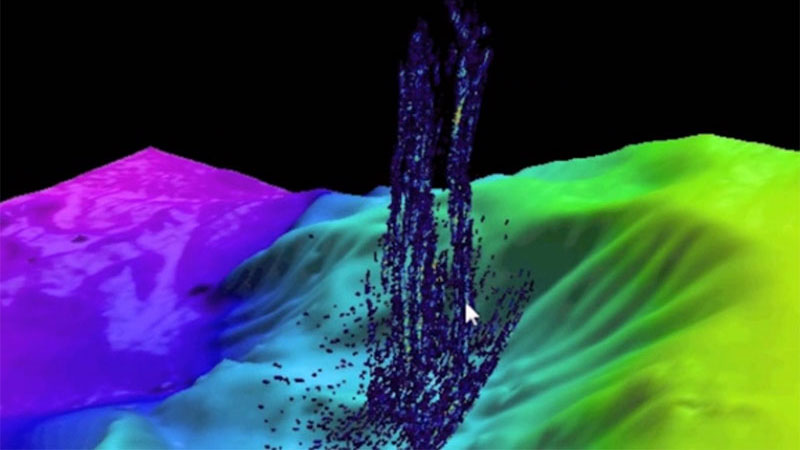December 5, 2020: Bubbles

Image courtesy of the NOAA Office of Ocean Exploration and Research. Download larger version (jpg, 141 KB).
Fishermen have used sonar to find their prey for decades, but oceanographers have only recently discovered the benefits of scanning the water column for tiny bubbles that may reveal secrets on the seafloor.
In May 2009, as NOAA Ship Okeanos Explorer was conducting its first shakedown cruise off the California coastline, NOAA scientists found something surprising. As they were testing a brand new multibeam sonar device attached to the hull of the ship, they began seeing readings that indicated a plume of something rising from the seafloor. This image, created using data from the multibeam sonar, shows an underwater gas plume rising 1,400 meters (4,590 feet) from the seafloor.
This was the first time that multibeam sonar, which had previously been used for seafloor mapping, was used to detect seeps of methane gas bubbling up from cracks in the seafloor.
One of the goals of the cruise was to find a methodology to optimize settings on the multibeam sonar to detect gas leaks. It worked.
From: Sonar Testing on Okeanos Shakedown Reveals Big Plume of Underwater Gas.